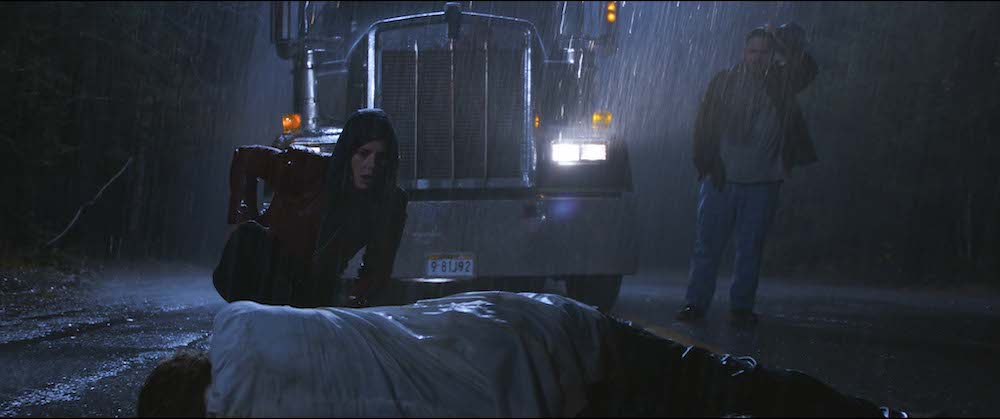Create a free profile to get unlimited access to exclusive videos, sweepstakes, and more!
'Resident Evil: Welcome to Raccoon City' director breaks down post-credits scene, sequel hopes
Resident Evil: Welcome to Raccoon City is now playing in theaters everywhere.

The original batch of Resident Evil movies went on to make over $1 billion at the global box office, so it's probably not too far-fetched to assume that Sony is hoping to launch a similarly lucrative franchise with Welcome to Raccoon City.
Now playing in theaters the world over, the new movie is a much more faithful adaptation of the Capcom video game franchise, but only adapts the first two games in the series. Since its inception in 1996, the Resident Evil IP now spans over a dozen gaming titles, which means the studio won't be wanting for source material if it decides to green-light subsequent installments.
Of course, no modern blockbuster is complete without the obligatory end credits scene that leaves the door open for more adventures. Welcome to Raccoon City is no exception.
***WARNING! The following contains major spoilers for the film!***
The movie ends with villain Albert Wesker (played by The Umbrella Academy's Tom Hopper) inching closer to his appearance in the games with a pair of shaded sunglasses handed to him by another classic character: Ada Wong (Lily Gao).
"I think [Welcome to Raccoon City] sets up an origin story for each of our characters," Raccoon City's writer-director, Johannes Roberts, recently explained to Entertainment Weekly. "I would like to explore the other games. I think it would be really important to me that we don't just use this as a springboard to go off into our own crazy world. There's so much in the games that is fascinating and exciting that I would really love to continue to explore."
"If they were getting the same team back together and going back into this world and taking the character further, maybe bringing two of the games again as source material, creating a hybrid, that would be very exciting," added Hopper. "The Wesker from here, and how he comes back to the group as closer to the Wesker in the games, is very interesting — what his life will be like in sunglasses."
Wong could certainly show up again in the future, though Roberts felt that her iconic femme fatale outfit — comprised of trench coat and bright red cocktail dress — is a little too outlandish for the more semi-grounded approach he wanted to achieve. The goal was to make sure her costume didn't feel like "cosplay," the filmmaker explained. The same goes for Wesker's hair.
"I remember chatting with Tom about whether [Wesker] should have frosted tips for his hair and stuff like that," Roberts recalled. "I was like, 'That doesn't feel right to me. It doesn't feel like part of this world.' It just felt a little fake."
But come on — when you're dealing with zombies and mutated monsters, outlandishness is the one who's driving the bus.
Resident Evil: Welcome to Raccoon City is now playing in theaters everywhere.
The film — which hit the big screen Wednesday, Nov. 24 just ahead of the long Thanksgiving weekend — has brought in $8.8 million in North America, making it the lowest opening of the Resident Evil franchise. Welcome to Raccoon City nabbed $5.1 million internationally for a worldwide bow of almost $14 million (a little more than the domestic debut of The Final Chapter in 2017). Not too shabby considering the movie only cost a modest $25 million to produce.
It doesn't have much more to go until it breaks even and despite a low 26 percent on Rotten Tomatoes (the audience score isn't much higher at 56 percent), box office returns always speak louder than critical reviews.
"Despite the fact that Welcome to Raccoon City was the lowest-grossing of the wide release Thanksgiving debuts, there is still an audience out there for this long-running franchise," Paul Dergarabedian, Senior Media Analyst at Comscore, told SYFY WIRE. "Key will be the budgets for any potential follow-ups moving forward and, of course, there is always the option for the IP to be used — perhaps — for future small screen narrative content."


























